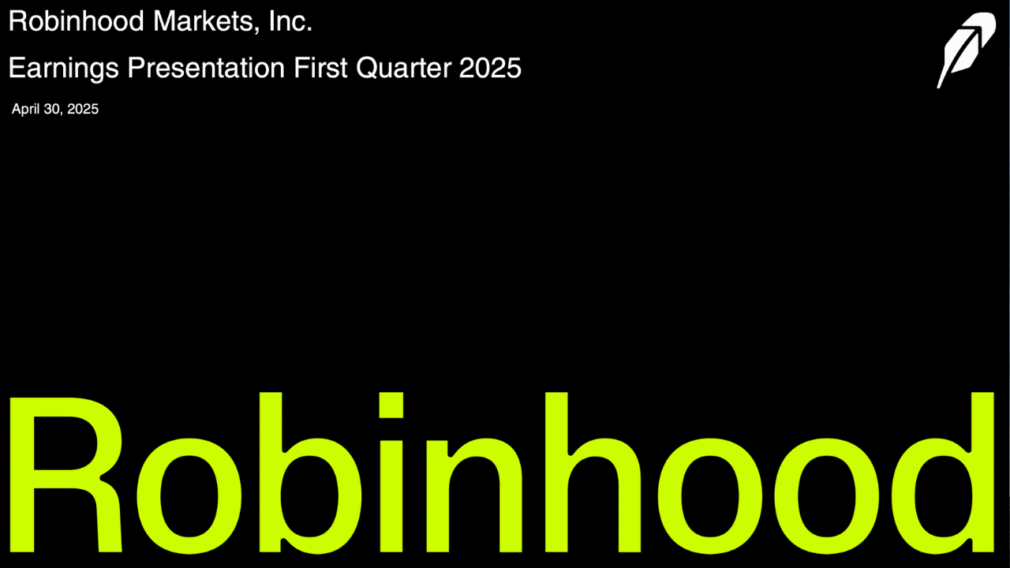Robinhood’s Prediction Markets Hub Trades Over 1 Billion Contracts in Q1 2025
Robinhood kicked off 2025 with a bang, reporting a 50% year-over-year revenue spike to $927 million in Q1, though down 9% from Q4 2024’s $1.01 billion.

A Solid Quarter with Prediction Power
The Menlo Park-based trading platform saw transaction-based revenues climb 77% to $583 million, fueled by a 100% surge in crypto revenues to $252 million, a 56% rise in options to $240 million, and a 44% uptick in equities to $56 million.
Net income doubled to $336 million, up 114% from Q1 2024, with diluted EPS at $0.37, a 106% leap, though both dipped from Q4’s $916 million and $1.01 EPS due to one-time tax and regulatory benefits.
A standout in Q1 was Robinhood’s push into prediction markets, a key piece of its 2025 roadmap targeting active traders. The company launched a dedicated prediction markets hub in its app, letting users trade contracts on major global events, like the Federal Reserve’s May funds rate ceiling or college basketball tournament outcomes.
“We believe in the power of prediction markets and think they play an important role at the intersection of news, economics, politics, sports, and culture,” said JB Mackenzie, VP and GM of futures and international at Robinhood.
“We’re excited to offer our customers a new way to participate in prediction markets and look forward to doing so in compliance with existing regulations.”
Prediction Markets Steal the Show
Robinhood’s prediction markets hub, rolled out through a partnership with CFTC-regulated KalshiEX LLC, saw wild traction, with customers trading over 1 billion event contracts in the past six months.
These contracts, part of the “other transaction-based revenues” bucket alongside futures, let users bet on event outcomes, with prices reflecting market-driven probabilities.
The hub’s launch, flagged as a sign of “robust product velocity,” has tapped into a hot trend, boosting engagement among Robinhood’s 25.8 million funded customers, up 1.9 million year-over-year.
Unlike traditional betting, prediction markets operate like financial exchanges, offering liquidity and transparency. Robinhood’s platform, which also supports stocks, options, futures, and crypto, integrates these contracts seamlessly, drawing active traders chasing dynamic opportunities.
The company’s compliance focus, working closely with the CFTC, ensures the hub stays legit, avoiding hiccups like February’s brief Super Bowl contract pause after regulator pushback.
Beyond Prediction Markets
Robinhood’s growth wasn’t just about prediction markets. Net deposits hit a record $18 billion, up from $16 billion in Q4 2024, while total platform assets soared 70% to $221 billion, including $41 billion from the newly acquired TradePMR.
Robinhood Gold subscribers jumped 90% to 3.19 million, boosting other revenues by 54% to $54 million. Average revenue per user rose 39% to $145, and adjusted EBITDA climbed 90% to $470 million, though down 23% from Q4.
The company also upped its share repurchase program to $1.5 billion, returning $322 million to shareholders in Q1.
Recommended
